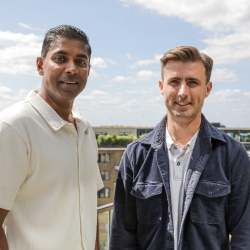Creativity is elusive and downright unpredictable
Even seasoned creatives find it almost impossible to nail down where their ideas come from. Elizabeth Gilbert, in her Ted Talk Is Creativity Divinely Inspired? (below), spoke about how in Ancient Roman culture people did not believe that an artist’s creativity came from within. Instead, it was believed to be bestowed by a divine being that came to human beings at will from a distant and unknown source.
This reasoning does justice to the random nature of creativity and the realisation that you cannot always command it or count on finding inspiration in the same sources. To be creative requires exploration, it requires the ability to step out of the usual whilst embracing the fluidity of thought.
If we understand this, then it follows that because creativity doesn’t behave rationally, we cannot afford to adhere to rigid processes or sequential thinking. Instead, we can solve creative problems by relying on intuition, trusting our imagination, and adopting collaborative iteration.
A LinkedIn post once asked what the secret to a great strategy-creative collaboration is and my response was “to have less ego”. I genuinely believe it is ego that keeps us stuck to a plan, even when it no longer serves us; when the creative is struggling to find it inspiring, the client is not responding as we hoped, or when new information has come to light.
To become truly inspirational, people need to be given the licence to step out of silos and away from static structures. The licence to cross-pollinate ideas and do things in new and usual ways. I say this, and not lightly, as a strategist who has learned over the years to leave room for exploration in my creative briefs. Leaving room for exploration not only begets the best ideas in my experience, but makes the process a lot more fun. So while it would be easier if the creative processes went in a linear orderly manner; from briefing, to research and ideation, it would also be less stimulating.
Earlier this year, I attended APG’s event, the Awards ‘Golden Shorts’…
The team behind Cadbury’s Generosity campaign talked about the task they had of creating a campaign to succeed the iconic Gorilla ad at a time when Cadbury was facing a lot of backlash. Strategist Sophie Kerbegian and Executive Creative Director Chris Birch, shared how being able to quickly adapt and modify plans, work collaboratively as a team, and have little side chats helped them produce a campaign that was not only a game changer, but was equally iconic.
For me this is the beauty of embracing exploration in strategic planning. It leads to new spaces and removes the fear of reaching peak creativity. There is always room for something more inspirational, if you look in a different place!
Don’t get me wrong, I am not advocating against plans — plans can be vital to the ideation process. In fact, after providing creative inspiration, the majority of my job is to put a plan in place for campaign roll out. I know how the absence of a plan can make it difficult to even hit the start button and the magical power of a plan to organise thoughts, inform why and keep the team grounded. Instead, what I am saying is that in making plans we need to leave room for adventure lest we stifle creativity and the fun in creating. We need to embrace the unexpected, in fact look out for it.
Featured image: inanc avadit / Unsplash

























